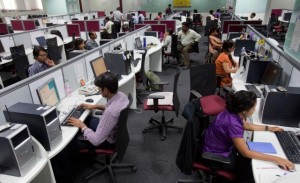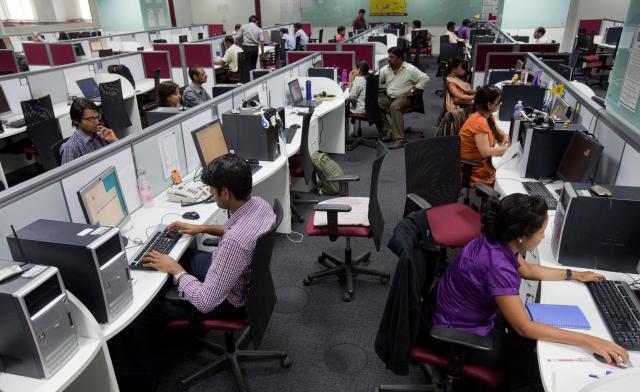Track2Realty Exclusive
 In the evaluation of sustainability of a housing market, the absorption of office space is the prime indicator across the world. After all, it is the economic activity and the job magnet that fuels the demand for new houses. The city of Mumbai has always been blessed on that count due to demand and supply dynamics.
In the evaluation of sustainability of a housing market, the absorption of office space is the prime indicator across the world. After all, it is the economic activity and the job magnet that fuels the demand for new houses. The city of Mumbai has always been blessed on that count due to demand and supply dynamics.
As a matter of fact, in Mumbai the stock of housing supply has been so less compared to the inherent demand that the city happens to be arguably the only city in the world where the best of residential properties are selling at higher price than the best of commercial spaces.
The slowdown and the resultant slow sales, of late, nevertheless started giving an impression of over-supply in the under-supplied housing market of Mumbai. However, the financial capital of India has time and again proved the prophets of doomsday wrong with its property market proving to be more resilient than any other market.
And hence, market analysts are not surprised with the fact that the dynamics is yet again changing and the office space absorption pattern has already indicated that the revival of Mumbai housing market is on the cards.
Facts speak for themselves. As per a report by Colliers International, the commercial capital of India registered a record over 2.93 million sq feet of office space absorption in April-June quarter this year, its best performance since January-March 2013.
It has also outperformed many other traditional cities known for high business activity, of late. More importantly, there are multiple demand drivers ranging from Banking, Financial Services & Insurance (FSI), IT/ITeS, Manufacturing, Pharmaceutical, Media & Entertainment sector that are bullish on the city. These are the sectors who are at the forefront of high occupancy across the city.
Does it sound like more job creation & economic activity ahead? Doesn’t it sound like more housing demand? Analysts tracking the city property market maintain the fundamentals are heavily loaded in favour of housing demand ahead. The developers also believe it is a matter of one more quarter and the sales figure during the festive season would give an altogether different statistics as far as housing absorption is concerned.
Brotin Banerjee, MD & CEO of Tata Housing agrees that there has been a revival in the fortunes of office space in Mumbai as the city has registered absorption of 2.93 million sq feet with industries like BFSI, IT/ITeS, Manufacturing, Pharma taking over office spaces in the city. It is currently in sharp contrast to the residential real estate market which is witnessing lower absorption rates. However if commercial sales are to go by, this impetus is directly proportionate to the demand for residential developments.
“With the festival season around the corner in Mumbai, we are expecting an upswing in the property transactions as people prefer buying houses due to the auspiciousness of time. The real estate landscape in Mumbai has reached a plateau but with slew of measures like relaxation in the FDI norms followed by the interest rate cuts and the facilitation of REITs by Government of India and endeavors to introduce clarity through the ‘Real Estate Regulatory Bill’ will help to foster the comeback of housing market in Mumbai region. With festival seasons due to start from September, we are sanguine about the revival of the housing market in Mumbai,” says Banerjee.
David Walker, Managing Director, SARE Homes also points out to the recent report by property consultants JLL that says Mumbai will continue to see an increase in leasing activity by BFSI companies. Major activity will be seen in its sub-markets like the key commercial district, Bandra Kurla complex (BKC), and the western suburbs. Commercial development would continue to define the real estate market in Mumbai, creating a ripple effect on the growth of residential market.
“There is a huge unmet demand for affordable housing in Mumbai. Mumbai is growing in terms of infrastructure and connectivity, and has become a hub for media, entertainment, consultancy and financial services. This has resulted in job opportunities. It would be prudent to say that demand surged but so have the prices. Looking at the current scenario with an already low profit margin, decline in prices is a farfetched reality. But developers are expected to come up with attractive offers and incentives to accelerate sales during the auspicious festive season,” says Walker.
Manju Yagnik, Vice Chairperson of Nahar Group welcomes the developments and calls it a positive indication that the market is gaining better traction. According to her, we can look forward to better conversions going forward. High absorption of office space indicates healthy outlook in economy and employment, which invariably trickles down to increase in demand for residential property. The important aspect here is revival of the market which bodes well for the entire real estate sector.
“In order to see a genuine housing revival, the government will need to take the initiative by introducing more industry friendly policies which will propel growth and have a ripple effect within the real estate sector. We hope to see some positivity this festive season but most importantly we need to create a conducive environment for growth of the real estate sector,” says Yagnik.
There is no denying that housing revival is directly proportional to the office space consumption. However, it is not just the raw statistics that is giving solace to the residential developers of Mumbai. There are actually three strong indicators that are lending credence to the revival theory of Mumbai housing.
First, it is not just the volume of absorption that is on the higher side; rather the fact that large companies are opting for bigger spaces and even the entire floor plates are being negotiated suggests that revival of housing demand is not far.
Secondly, this demand of office spaces is not single-sector driven but multiple demand drivers are in play today and that suggests the expected growth is not dependent on the fortunes of any one industry. And thirdly, the spirit of festive season with attractive deals and price points across the Mumbai market adds zing to the housing demand.





